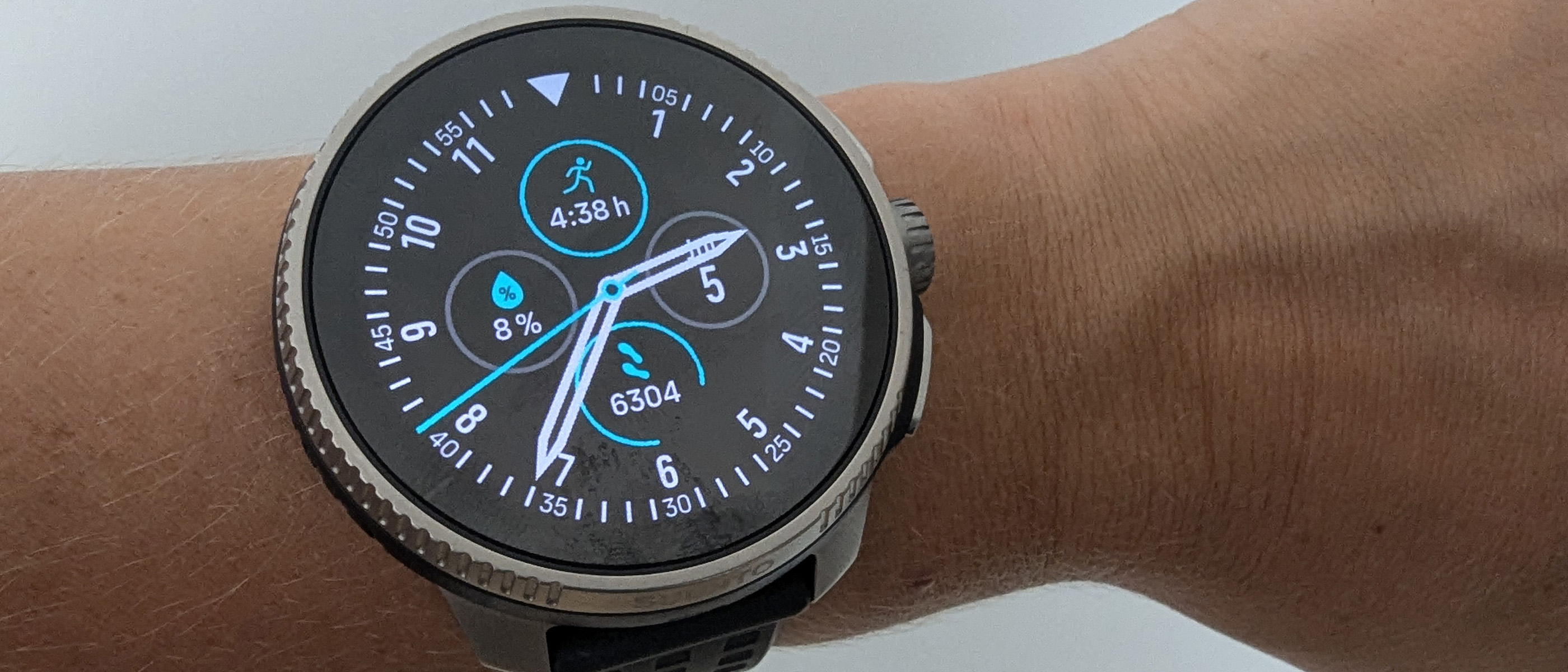Live Science Verdict
We have loved getting to know the Suunto Race. For the most part, it's excellent, well-made, has most of the health and fitness data you could ask for, and the GPS tracking is very accurate on land. We did find inconsistencies with distances when swimming, which is the only real negative, and it's on the chunky side.
Pros
- +
Incredible battery life
- +
Accurate health tracking
- +
Detailed maps navigation
- +
Ongoing software support
Cons
- -
Swimming distance accuracy not consistent
- -
Pretty big
- -
Not the most intuitive app
Why you can trust Live Science
The Suunto Race, released in October 2023, is a formidable-looking device that sits proudly on your wrist. Throughout our review period, people often noticed the large and protruding 49mm watch face and commented on it, as it takes up quite a lot of 'arm space'. That is hardly surprising, though, given the tech packed into this thing. That said, Suunto clearly listened to previous feedback and developed a smaller version of this watch, the Suunto Race S, which we hope to try out next.
It's definitely worth mentioning Suunto's efforts towards sustainability - each watch is fully carbon offset in a Tree-Nation reforestation project with Verified Carbon Units by planting coastal mangrove forests.
We've spent more than two months wearing this watch around the clock. We've tried out lots of features (though not all the sports modes, as that would take us a lot more time!). Read on to find out if we think it can compete with the fitness trackers in our best fitness tracker guide (hint...we do!). There are a couple of versions of the Suunto Race. Our review sample is the Titanium finish with 32GB internal storage.
Suunto Race GPS sports watch review
Suunto Race: Design
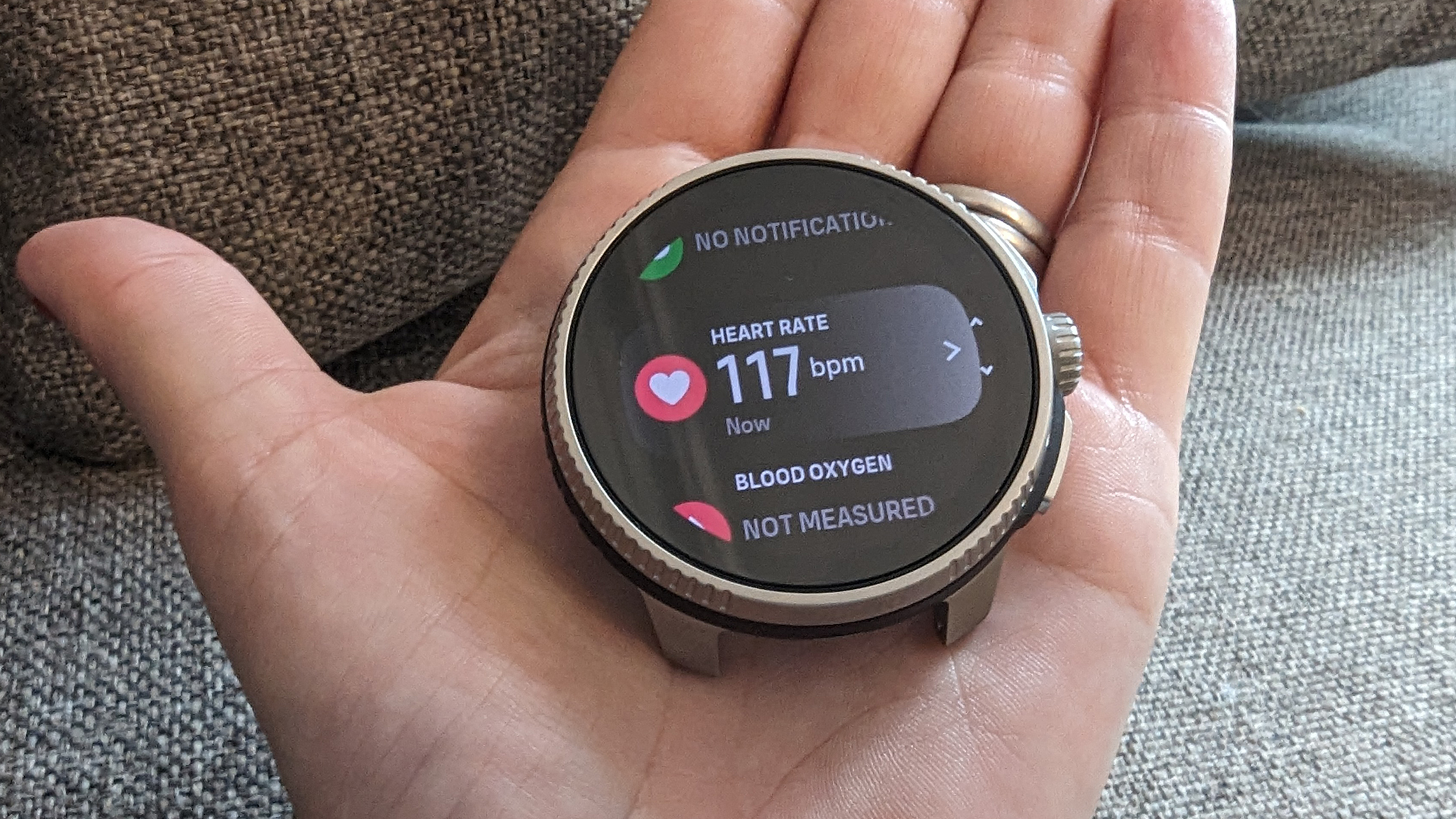
- Large AMOLED display
- Fairly thick watch face
- Sapphire crystal glass
The first thing to say about this watch is, it's big. Our reviewer has fairly small wrists, and this watch does look quite menacing. It's definitely not a watch to choose from if you want something discrete, and is perhaps better suited to larger arms/wrists. The diameter of the AMOLED display is 36.33 mm and the thickness of the watch from your wrist to the top of the watch is 13.33 mm. It's fairly weighty at 83g, but our reviewer actually prefers having a device with a bit of weight to it.
| Display | AMOLED 1.43-inches |
| Always-on | Yes — optional |
| Dimensions (inches) | 1.93 x 1.93 x 0.52 -inches |
| Dimensions (milimetres) | 49 x 49 x 13.3 mm |
| Weight | 83 g / 2.93 oz |
| Finish | Stainless Steel/Titanium versions |
| GPS | Yes |
| Compass | Yes |
| Altimeter | Yes |
| Water resistance | 100M |
| NFC payments | No |
| Compatibility | iOS, Android |
| Storage | 32GB for titanium and 16GB stainless steel version. |
The silicone strap has a pin closure and is ventilated with lots of holes, obviously helping with breathability. Thanks to the two-pin fastening, it is comfortable and feels secure. It is a quick-release strap, so it can easily be swapped out for other colors and designs — any 22mm watch band will work.
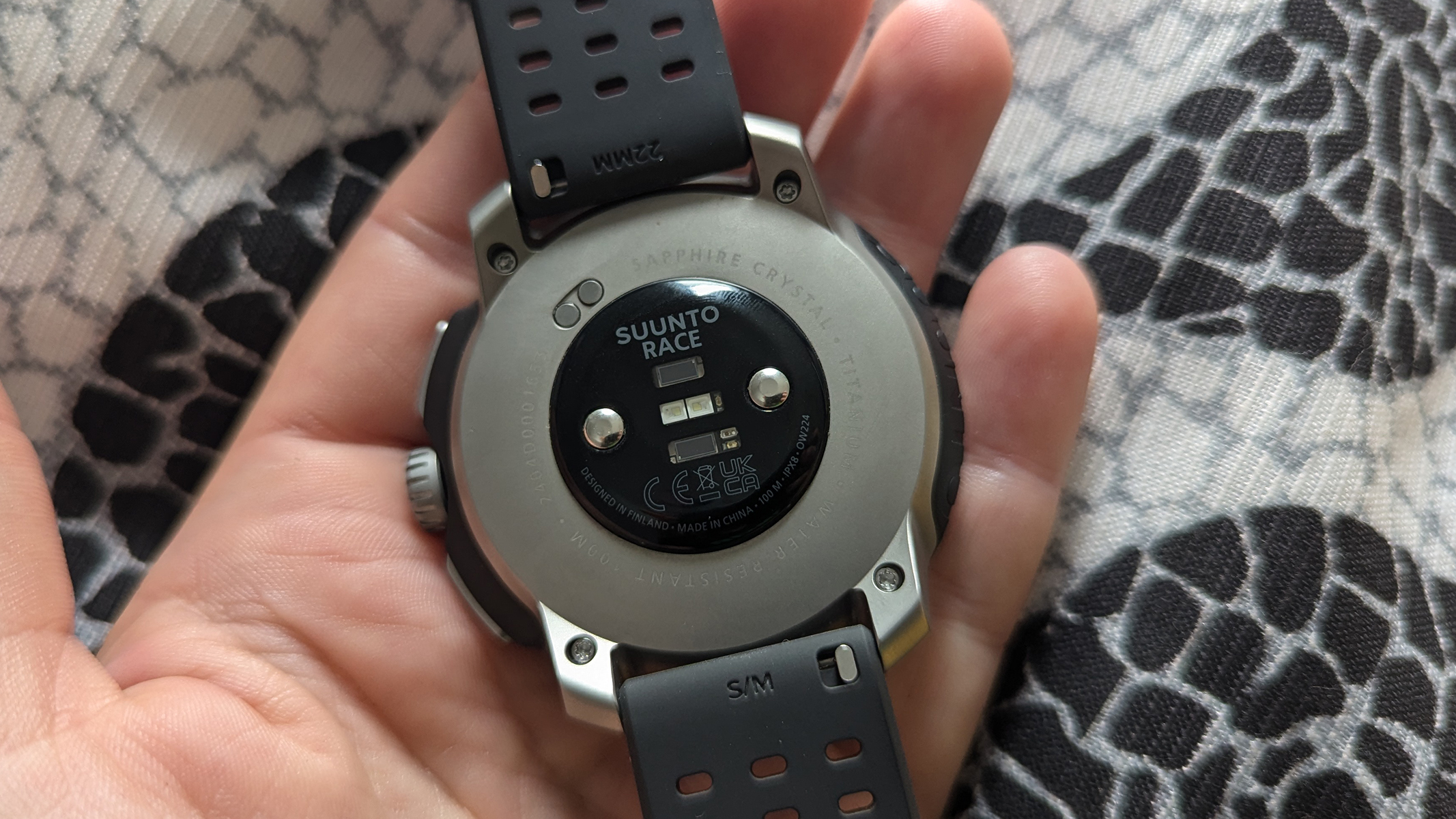
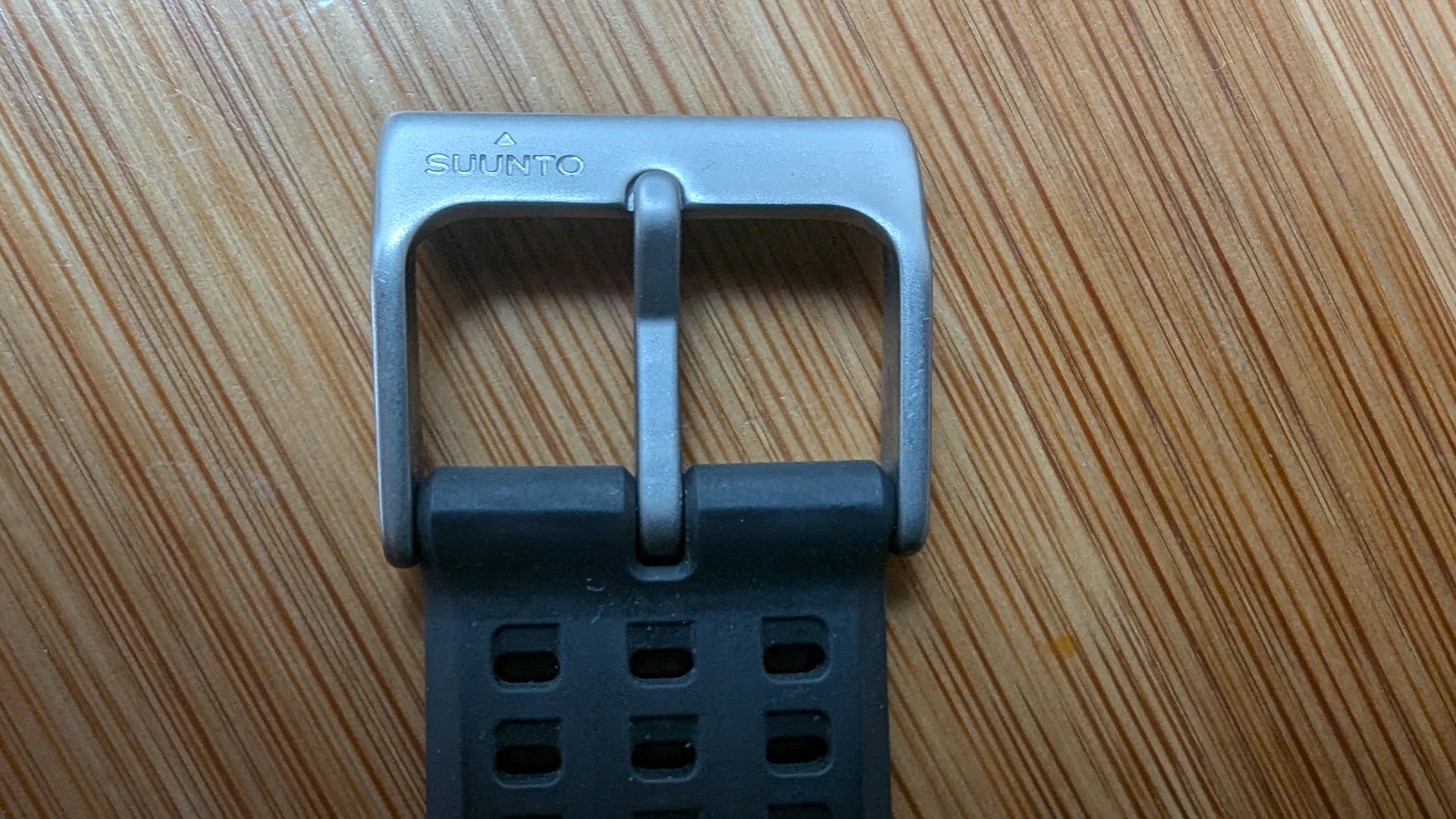
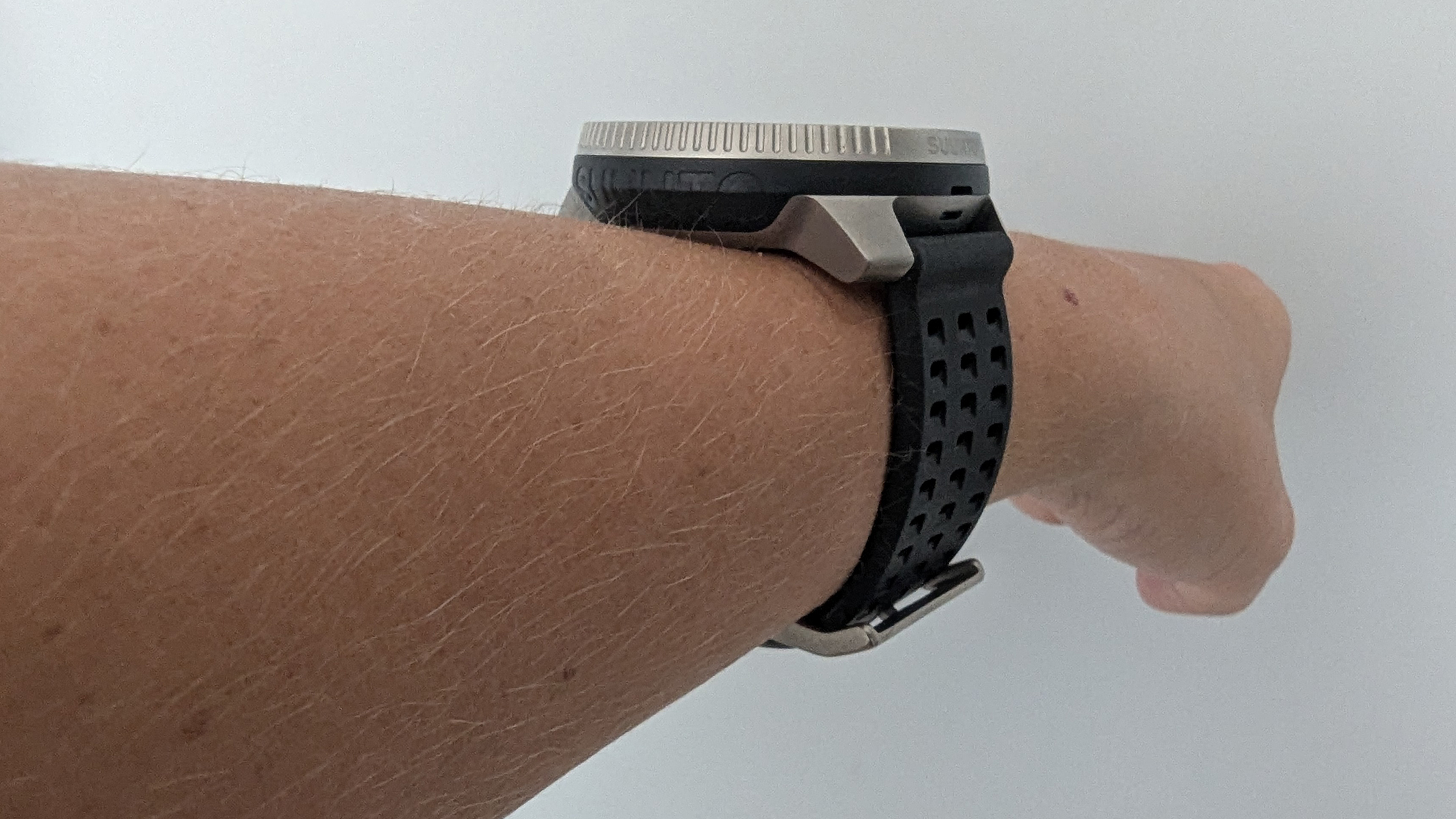
When the strap is tightened securely (it's plenty adjustable for large and small wrists), the watch sits close to the skin to allow the sensors to take accurate measurements.
Suunto Race: Display
- Large, bright display
- Scratch proof glass
- Customizable watch faces
The Suunto Race's glass is 'Sapphire Crystal', something our somewhat clumsy tester was thankful for on numerous occasions. It sustained several knocks throughout our testing and it still doesn't have a scratch on it. It does reflect light quite a lot, resulting in a few episodes of blinding the passenger in the car on a sunny day or winding the cat up with a ball of light dancing around the walls and ceiling.
The 1,000-nit AMOLED screen is very clear to read, and you can set it to low, medium, or high brightness. We left it on medium, which was plenty bright enough in all conditions. There are two modes: always—on and gesture-based. The former dims the screen when you lower your wrist, and the latter effectively turns the screen off until you raise your arm again. We kept ours as gesture-based.
You can also decide whether only the time is displayed on your wrist when you raise it, or the whole watch face. We tended to stick with the former and just tap the screen if we wanted to get the full face. There is a 'do not disturb' mode that mutes sounds and vibrations and keeps the screen dim until you turn it off, or if an in-watch alarm you've set goes off.
There's also a handy 'torch' function. We were skeptical about this, but it ultimately lights the watch face up bright white, and it is plenty bright enough to find your way to get a glass of water in the night or find items in your camping tent at night (we used it for this on several occasions).
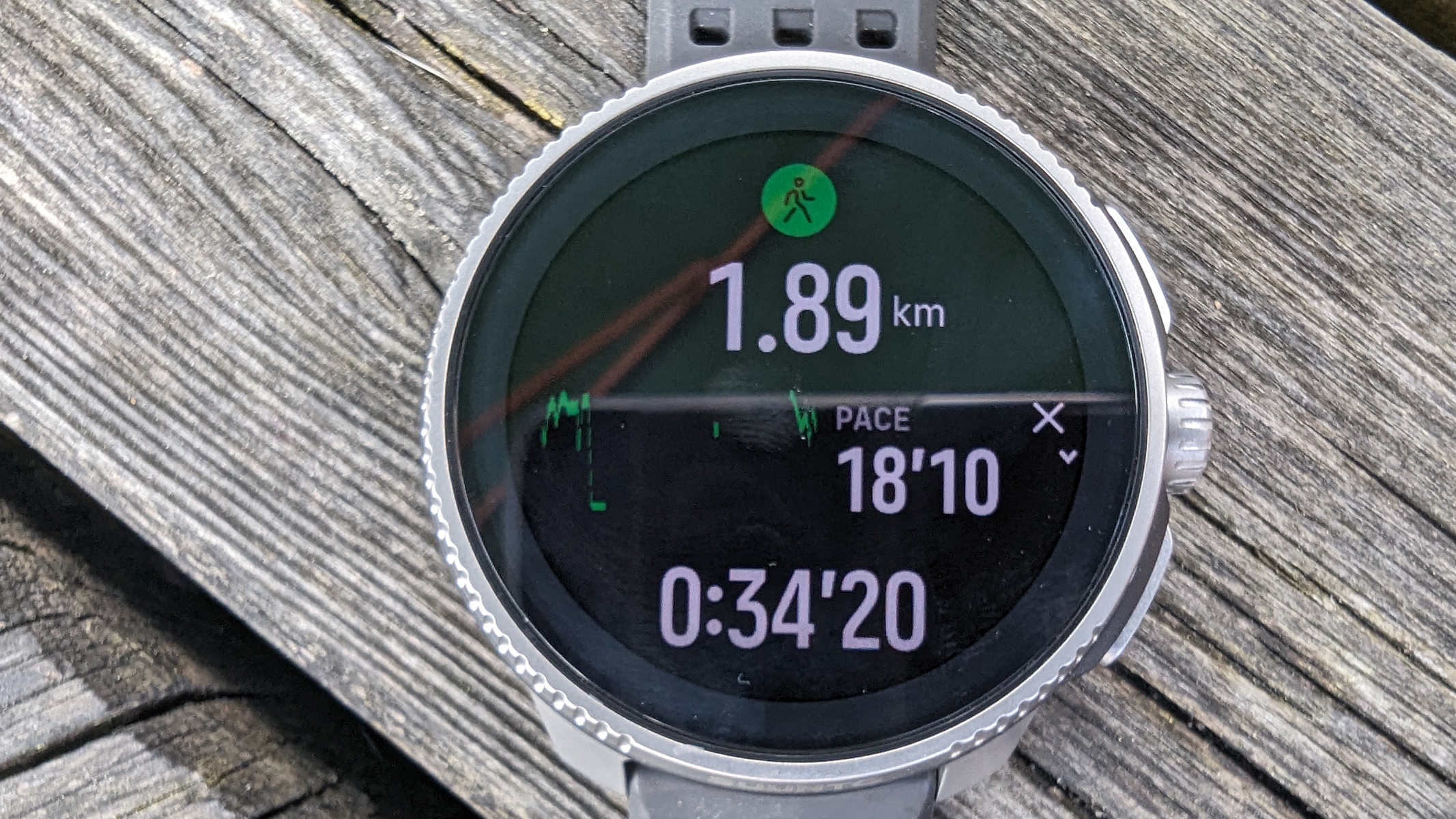
There are fifteen watch faces to choose from, which can be selected on the watch itself, and each watch face can be customized with 'complications'. We did find it a little tricky to get the watch face to show exactly the data we wanted as all of the faces have different numbers of 'complications' (bits of data e.g., heart rate, step count, blood oxygen, etc.).
Some complications are selectable on some faces and not on others. After a software update that our watch face reset — it took seconds to change back, but this was just a slightly annoying niggle as we'd had it set up exactly how we wanted it.
Suunto Race: Features
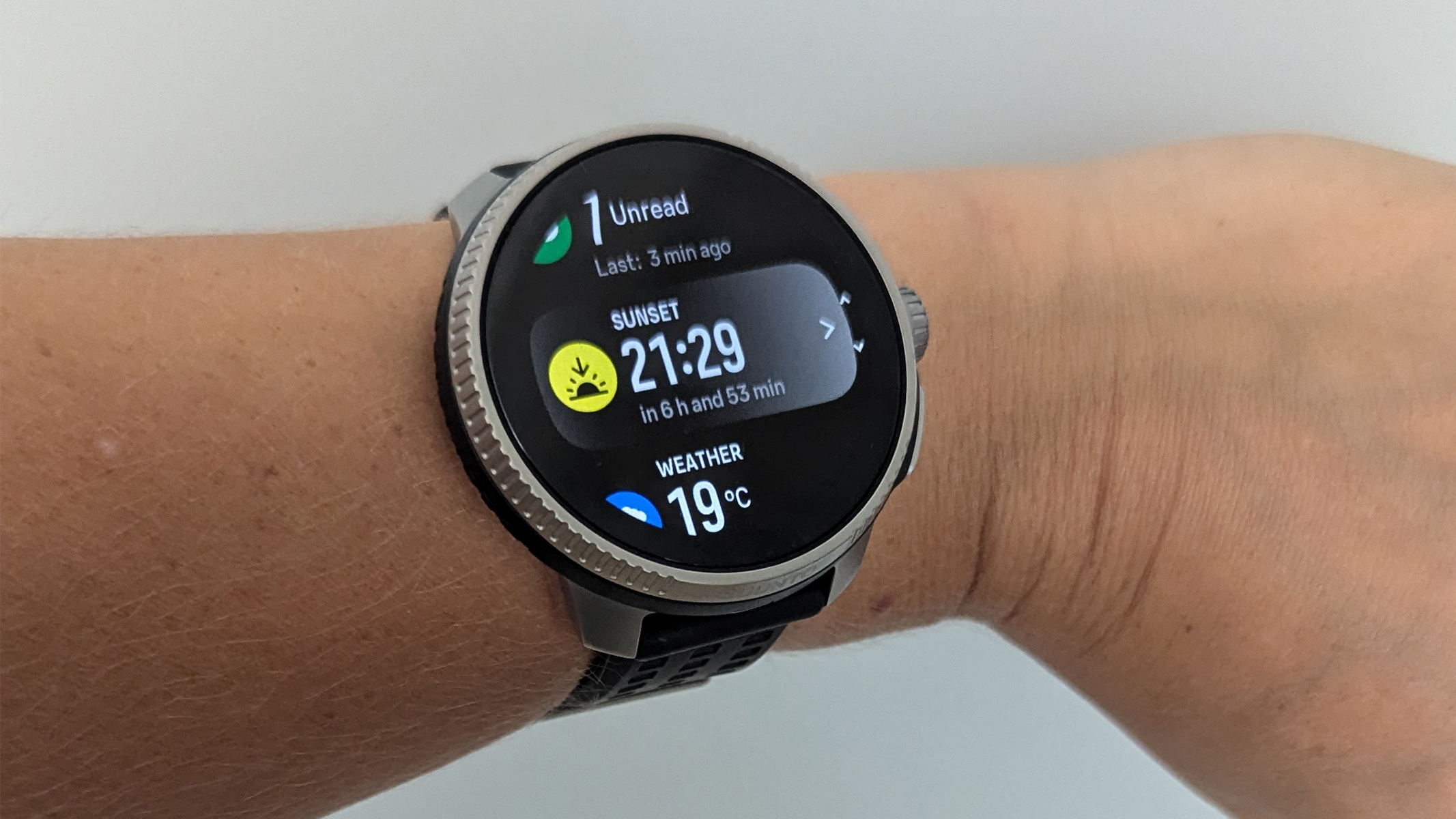
- Heaps of health-tracking features
- Phone notifications
- Fitness tracking
The Suunto Race is packed with features. It has all of the usual things we've come to expect from fitness watches — it isn't missing anything aside from blood pressure monitoring, which you usually need to set up with an external machine anyway. All the basics are there — heart monitor, oxygen models, sleep quality tracking, heart rate variability (HRV), calories burned and energy levels (called 'resources').
Historic data is all visible in the Suunto App. Again, we don't think we've maximized the use of all of the data that this watch collects to its full potential, though we have found ourselves wanting to hit PBs, monitoring sleep daily, being more aware of bedtime, making sure we hit our step-count goal, and being consistent with exercise — all good reasons to use a fitness tracker.
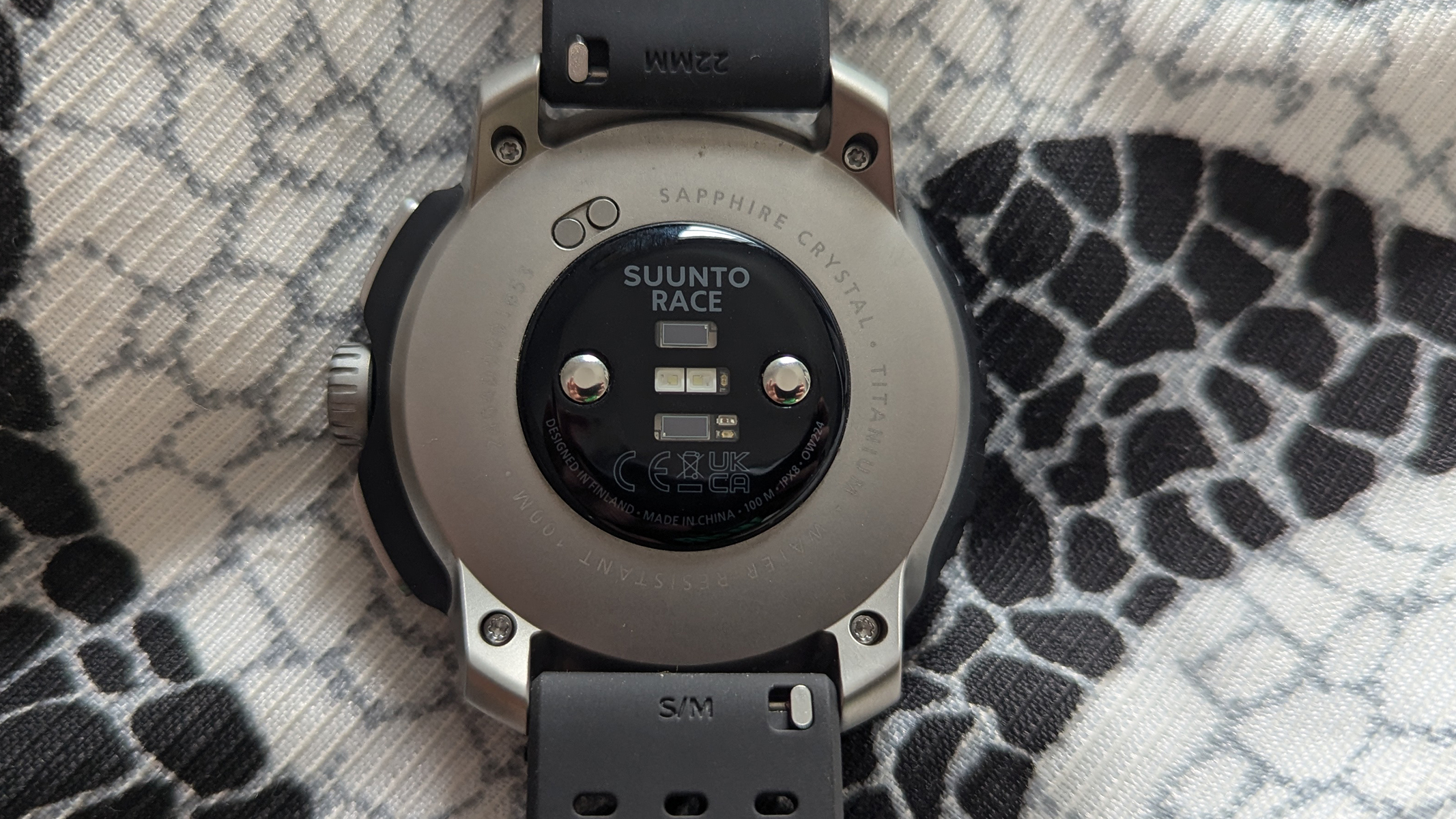
This is predominately a fitness tracker, as opposed to a smartwatch, but it still has plenty of features that a smartwatch has. You can control music, receive notifications when you are getting a call on your phone, and send pre-defined replies (which you can edit in the app) to incoming messages.
One thing users may miss is being able to pay for their shopping using NFC — not something we minded too much, as we got this watch to predominantly use as a fitness tracker. The required hardware does exist in the watch so this might be added in a software/firmware update in the future.
There are almost 100 different pre-defined sports modes, with the functionality to add your own. A couple of the more 'unusual' examples include roller skating, horseback riding, Nordic walking, surfing, mermaiding and cheerleading. All of the more common sports and activities like hiking, swimming, running, weight training, mountain biking, and circuit training are included.
Our tests centered around weight training, hiking and swimming. Each sport mode collects different data based on the activity.
Suunto Race: Performance
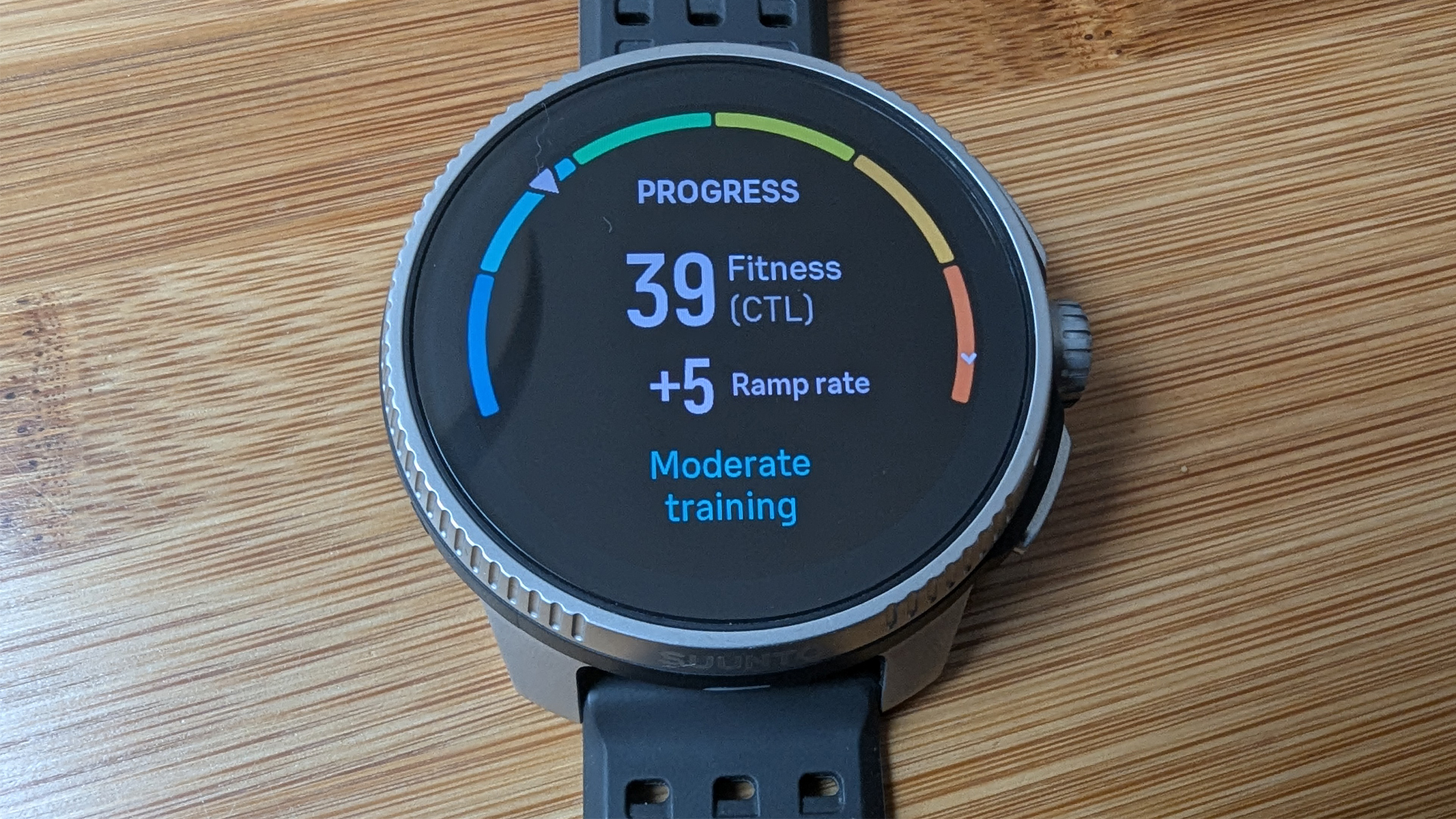
- Great health tracking accuracy
- Regular software/firmware updates
- Less favorable results for swim tracking
For weight training, the watch records the duration, average/max heartbeat, calories burnt, Peak Training Effect (PTE), Training Stress Score (TSS), and Excess Post-exercise Oxygen Consumption (EPOC). Again, if you're new to training with a fitness watch, perhaps you'll need to Google before understanding how this data can be helpful.
Hiking is what we enjoyed about this watch most — the joy of being able to add a GPX or KML route to your watch and follow the navigation on your watch screen, without having to keep getting your phone out or even having to have your phone on you is fantastic (though we wouldn't recommend hiking with no means of communication). We know, we know, paper maps still exist, but we think having the route available on your wrist, directing you which way to go, actually gives you more time to enjoy your surroundings without having to stop and check the map at every stile or fork in the path. You can also use it as a compass with a traditional map if you'd prefer.
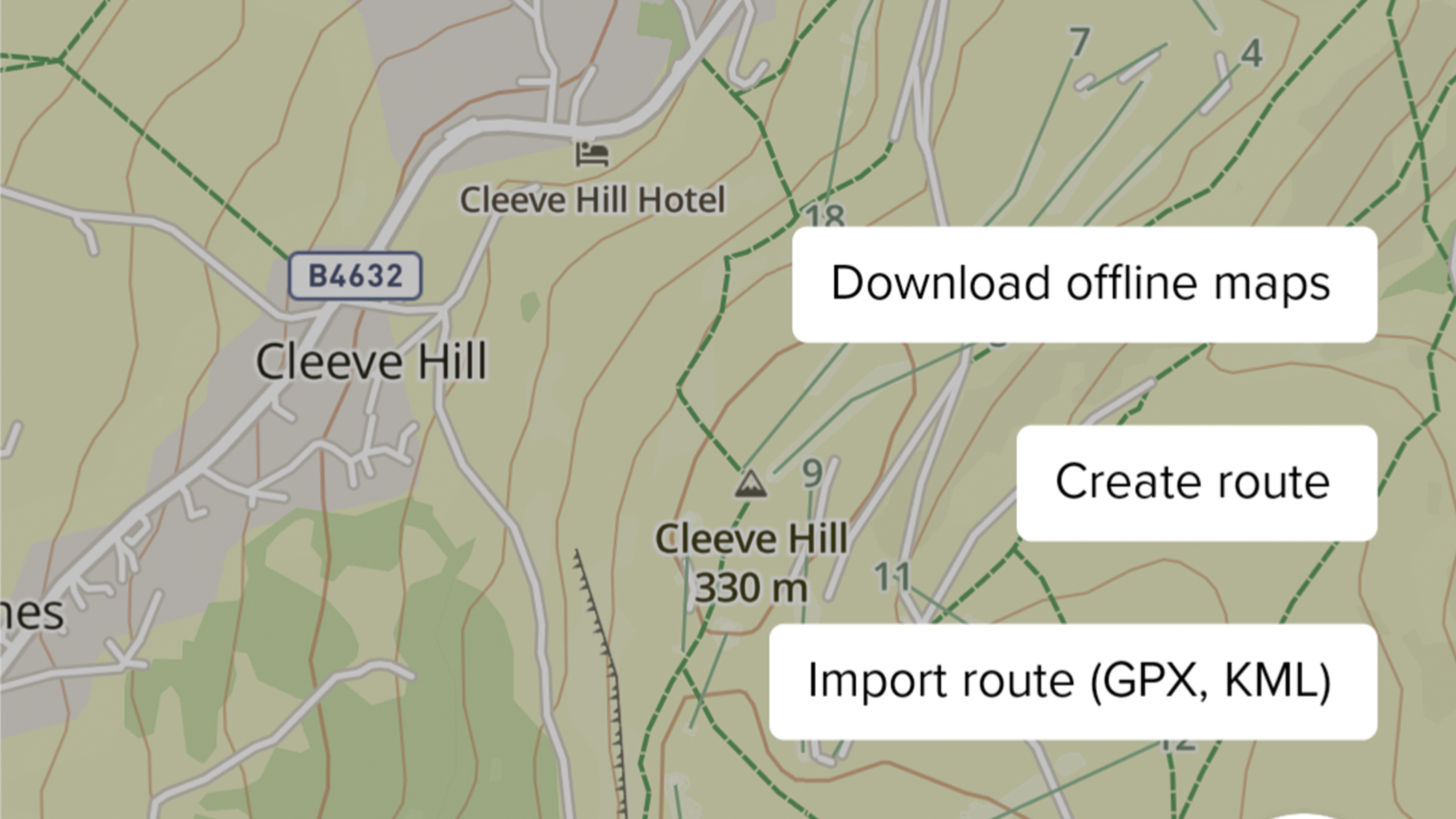
You get a sound/on-screen warning if you accidentally veer off route, so you don't have to keep your eyes on it all the time to stay on track. You can zoom in and out just like you can when looking at a map on your phone. If you aren't using a pre-defined route, you can leave 'breadcrumbs' as you walk, which you can 'follow back' if you lose your way—a nice safety feature.
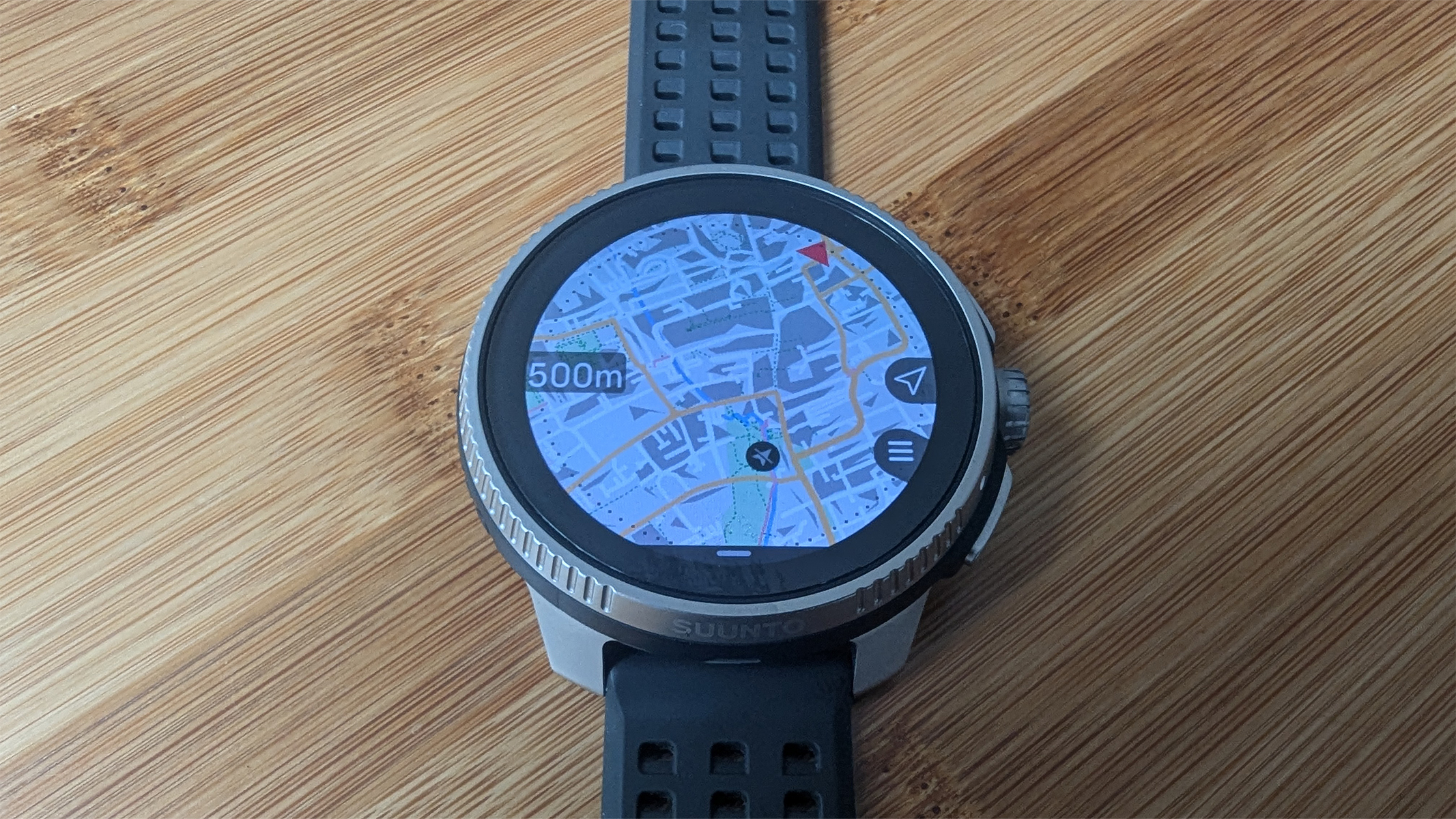
We did turn off the auto-pause function after a while as it is very sensitive and beeps every time we stop and start walking, even for the briefest moment, which somewhat distracts us from the peace of being out in nature. We are yet to find a setting to turn this 'beep' off; our 'tones' show as off, so we thought that would do the trick, but no luck so far.
For swimming — we were excited to give this a go in our local 50m pool, however, there were some niggles — which would be a problem if you're using this for swimming only. We set the pool length in the watch to 50m and swam two lengths (to check everything was turned on and working correctly before continuing with our workout). The distance displayed on the screen said 150m, obviously incorrect. Swam another length, this time only 25m logged. And this pattern of incorrect distances persisted.
We got in touch with Suunto, who suggested checking the pool length was set to the right amount (it was), not to change stroke mid-length (we weren't), to make sure we push off the wall at each end and to turn the GPS on. We did all of these things but still got consistently inaccurate distance measurements. As casual swimmers who predominantly use it for general exercise we could deal with updating the distance manually in the app post-swim, but for competitive or professional swimmers this is less than ideal.
Edit 07/07/2024: Just after submitting this review for publishing, the watch received an overnight software update. After this update, we can confirm the swim distance tracking was a lot more reliable. We couldn't see anything in the update release notes that mentioned changes to swim mode, but GPS tracking has been updated, so perhaps this has helped with more accurate swim distance tracking. So if you're experiencing the trouble mentioned above it might be worth updating your firmware.
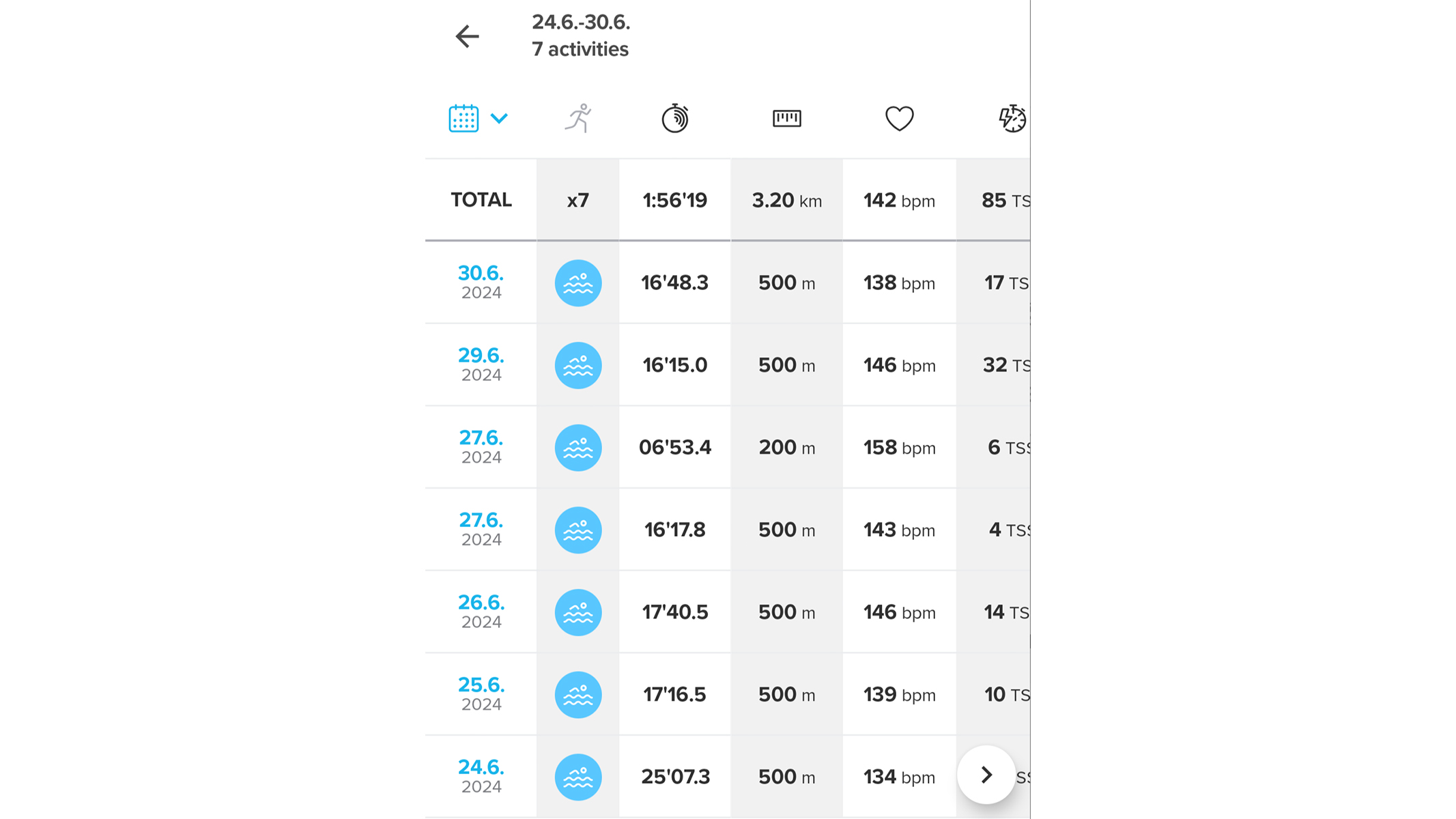
We mentioned previously that we're big fans of the GPS — aside from swimming, it is remarkably accurate. After a walk, you can look at the route you took; it tells you accurate elevation gain, descent, distance, and so on, along with a playback route function. The GPS is so accurate you can see where you crossed the road, exactly which line you took through the park and when you stopped to let the dog play in the river — it's eerily good, come to think of it!
To finish, on another positive note, the battery life is exquisite. Having upgraded from our (now old) Samsung Galaxy Watch 4, which barely lasted for more than a day and a half, we couldn't believe what we'd been missing. We can recall charging this watch up to full twice since we started using it more than two months ago. We have a 24/7 heart rate monitor on, have been on several 10 km+ hikes, daily walks, swam daily, lifted weights two to three times a week, and have generally not had to be 'careful' to preserve battery at all. It's simply fantastic!
Suunto Race: User reviews
The Suunto Race scores 4.2/5 on Amazon, with users stating that Suunto is an underappreciated brand. Many users (quite rightly) comment on the excellent battery and the large screen, which helps with visibility when out on the trails and in bright sunlight. As per our experience too, the GPS is very accurate and invaluable for following tracks in the mountains.
Should you buy the Suunto Race?
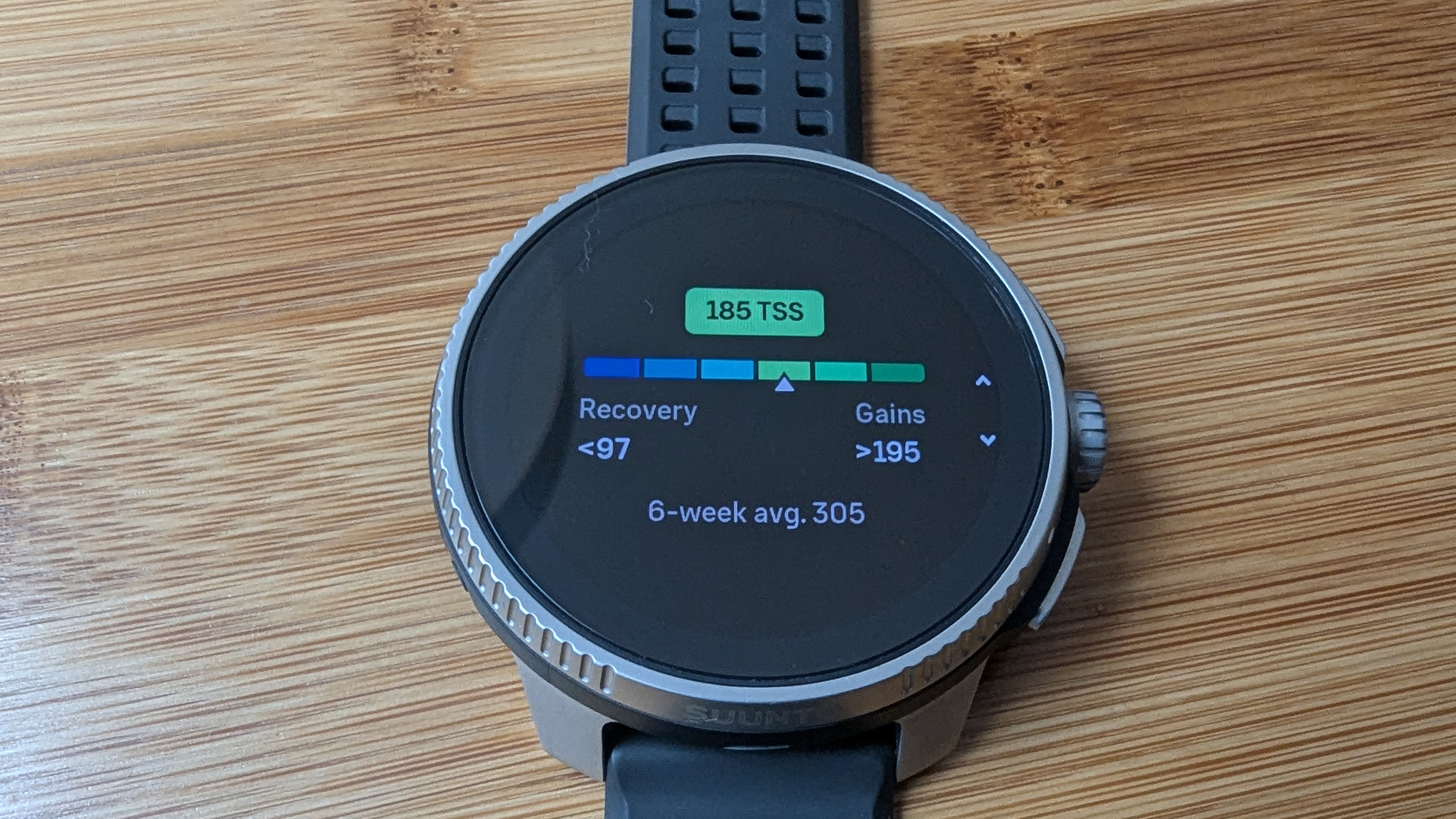
✅ Buy it if: We have loved using this fitness tracker for tracking our daily walking, weight lifting, and hiking. The health information is thorough and certainly helps you monitor improvements or weaknesses in your performance, sleep, oxygen levels, and so on. The battery life is exceptional—we'd happily take it away from home for more than a week and leave the charging cable at home.
❌ Don't buy it if: This isn't a smartwatch, so it shouldn't be considered as such; though it does offer some smartwatch functionality, it is definitely designed for fitness tracking, hence the name 'Race'. It's fairly big, though that might be a preference for some users. The only reason we wouldn't recommend it is if swimming is the primary sport you want to track — the distances aren't consistent and often inaccurate. Distances can easily be amended post-swim, but you'd find this frustrating if you track your swim fitness on a regular basis. That said, as we've mentioned, swim tracking did improve after a recent software update, so this can only get better!
If Suunto Race is not for you
If you're disappointed to find that the Suunto Race isn't ideal for swim tracking, another model to consider would be the Whoop 4.0, which is quite a different type of wearable. It doesn't have a screen, so it keeps you more streamlined in the water. It offers detailed health metrics to help sportspeople improve their performance, though it lacks basic functionality like step tracking.
The Garmin Fenix 7 is the most similarly designed fitness tracker in our best fitness tracker guide. There are a whole host of Fenix 7 variations, ranging in price from around $699 to $999. The performance seems to be pretty similar to the Suunto, and it also negates the need to take a phone out and about.
If you're an Apple fan, we can recommend the Apple Watch Series 8 — its design is much sleeker than the Suunto and the health and fitness tracking is superb, tho not all that different from the Suunto race, and the battery only lasts one day.
Suunto Race: How we tested
We spent around two months testing the Suunto Race. We aimed to try out as many features as possible — we took it weight training at the gym, on long hikes in the great outdoors and swimming lengths in the local Lido.
We monitored our own fitness and exercise stats over the review period, and the watch's data was consistent with results we could physically see and feel when exercising.
We wore it pretty much 24/7 throughout this time and checked the stats against our Myzone heart rate monitor and Samsung Galaxy 4 watch.

Tantse Walter is a photographer and adventurer that's spent seven years facilitating global adventurous expeditions. She loves getting into the nitty-gritty of sourcing and planning trips. Whether that be for astrophotography location scouting, or just for the love of exploration. Tantse enjoys taking creative, bright and bold photos of people, places, animals and the night sky. She is currently a contributing writer to both Space.com and LiveScience.com.
